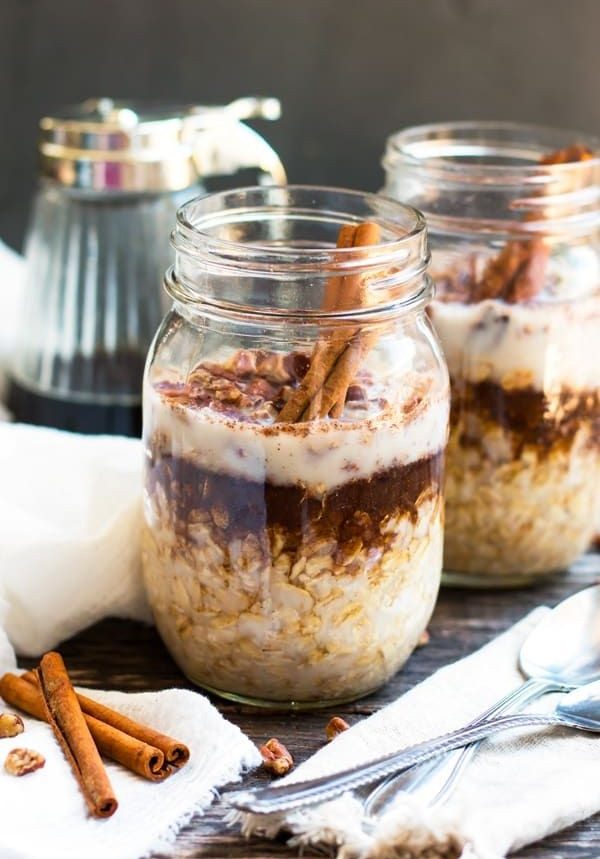Breakfast is the most important meal of the day and gives you a chance to start each day with a healthy and nutritious meal. So, it’s worth the effort to eat a balanced one.
Adults who report regularly eating a healthy breakfast are more likely to eat more vitamins and minerals, control their weight, control their blood sugar levels, and perform better at work.
Children who regularly eat a healthy breakfast are more likely to meet daily nutrient requirements, be at a healthy body weight, be able to concentrate and miss fewer days of school.
But the question is what exactly counts as a healthy breakfast? Here’s the core of a healthy breakfast:
- Whole grains. Examples include whole-grain rolls, and bagels, hot or cold whole-grain cereals, whole-grain English muffins, and whole-grain waffles.
- Lean protein. Examples include eggs, lean meat, legumes, and nuts.
- Low-fat dairy. Examples include milk, plain or lower sugar yogurts, and low-fat cheeses, such as cottage cheese and natural cheeses.
- Fruits and vegetables. Examples include fresh or frozen fruits and vegetables, 100 percent juice drinks without added sugar, and fruit and vegetable smoothies.
Together, these food groups provide complex carbohydrates, fiber, protein, and a small amount of fat — a combination that packs health benefits and helps you feel full for hours.
Find options from these core groups that suit your tastes and preferences. And try to choose food from at least three of these four food groups to round out a healthy breakfast.
Choices for a healthy breakfast:
When choosing what to eat for your breakfast, try to eat whole foods that are full of nutrients.
1. Eggs
Eggs make a simple, nutritious breakfast choice. Eggs are high in protein and several important nutrients. They may promote fullness and help lower your calorie intake later in the day.
2. Greek yogurt
A Greek yogurt is a great option if you’re looking for a quick breakfast. Greek yogurt is not only high in protein and low in calories, but certain types are also high in probiotics, which support gut health.
3. Coffee
Aside from water, coffee is the world’s most popular beverage. The caffeine in coffee promotes alertness and enhances physical and mental performance. Drinking coffee regularly is associated with a lower risk of illnesses.
4. Oatmeal
Oatmeal is a classic breakfast option — and it’s nutritious to boot. It’s made from rolled or steel-cut oats, which contain a unique fiber called beta-glucan. Oatmeal is rich in beta-glucan, a type of fiber that may lower cholesterol levels and increase feelings of fullness. It also contains many vitamins and minerals.
3. Porridge made from rolled oats
When choosing quick oats, go for the plain variety and add your own fruit afterward as the flavored varieties tend to have a lot of added sugar.
4. Fresh fruits and raw nuts
5. Smoothies
They are made from fresh fruit or vegetables, natural yogurt, and milk.
6. Natural yogurt
Natural yogurt with some fresh fruit added for extra sweetness and some raw nuts for crunchiness.
7. Cereal
Cereal can be a good choice — research indicates that people who eat cereal consume fewer calories at breakfast and are less likely to be overweight than people who eat other foods for breakfast. But not all cereals are created equal.
Choose cereals that obtain fiber, less sugar, and low calories.
Some ideas for a healthy breakfast:
Research has shown that schoolchildren are more likely to eat breakfast if easy-to-prepare breakfast foods are readily available at home. Some quick suggestions include:
-
Avocado and poached egg toast
Avocado toast is in the house! If there were a pageant for the most popular healthy breakfast, avocado toast might take the crown.
The once-niche food trend has now become a mainstream American favorite for breakfast and brunch.
-
Cinnamon Pancakes
A portion of the flour in this cinnamon pancake recipe is comprised of buckwheat. Not only does that make the breakfast staple heartier than normal, but it also ramps up the nutrition. Adding cinnamon gives the pancakes a wonderful flavor that’s an ideal pairing with maple syrup, so they’re delicious, too.
-
Chicken Omelet
Chicken adds a meaty component to an omelet without the high fat of pork products such as bacon, sausage, and ham. This chicken omelet, with nutty Gruyere cheese and spinach, lets you head into your day with a light step.
-
The Spruce / Laurel Randolph
Keto waffles swap traditional wheat flour for almond flour and almond butter for a nutty and delicious breakfast. Top with berry compote for flavors similar to a PB&J or simply drizzle with syrup. The waffles reheat well in the oven or toaster for an easy weekday meal.
-
Cream Cheese Pancakes
They are nice and delicate and come out more like crepes. Cream cheese, maple syrup, eggs, and vanilla extract are blended to create a batter. Dust with powdered sugar and top with berries.
Eating a healthy breakfast has numerous health benefits. If you are serious about your health and want to lose weight, you must make regular breakfast consumption a regular aspect of your daily routine.

